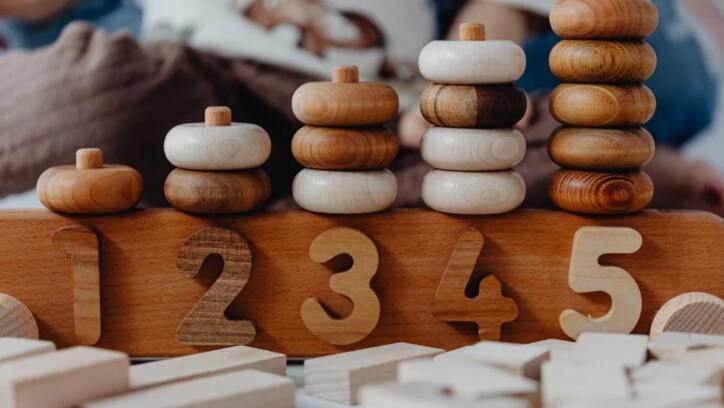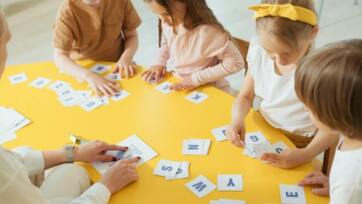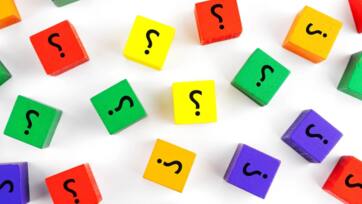Introduction
Math puzzles are excellent educational and recreational activities that allow children and parents to learn together through entertainment. The number of challenges leads students to solve problems, developing their ability to think critically while teaching them mathematics. The popularity of puzzles that unite educational value with entertainment has steadily risen among people who fall under the "math mania." Caring parents and their children share a great opportunity to learn math through engaging mental exercises that build their skills.
The Importance of Number Puzzles for Kids
Math puzzles at each child's vital cognitive and logical abilities above entertainment value. The entertaining format enables children to learn addition, subtraction, multiplication, and division operations. Puzzle-solving practice with numbers helps people recognize patterns, which remains vital for developing their mathematical thinking abilities. Through puzzle completion, children learn to trust numbers better while mastering mathematical principles that help them succeed in their education.
Benefits of Math Puzzles for Parents
Math puzzles benefit parents as much as they help children since they provide multiple educational advantages. Number puzzles that you work on with your children can develop your mathematical abilities and reinforce the importance of teaching together at the same time. Teamwork builds when parents work with their children to solve puzzles promoting positive learning situations. Making complex team-based puzzle-solving an additional benefit to parent-child relationship growth while making math more approachable and fun for children.
Enhancing Logical Thinking with Puzzles
Number puzzles deliver the most vital advantage through their ability to improve the mental skills required for logical thinking. To solve math puzzles correctly, people must evaluate problems with both critical thinking and strategic planning. When people work on number puzzles, they learn crucial problem-solving methods, including discovering patterns and identifying the best solution methods. Number puzzles deliver a problem-solving capability that can boost decision-making abilities during routine life decisions and unexpected problem situations.
Building Problem-Solving Skills
Number puzzles serve as invaluable resources that help people build their problem-solving skills. Complex problems must be decomposed into piecemeal components for proper solutions by individuals. Solving puzzles alongside parents teaches kids and parents to discover effective problem-solving methods and appropriate puzzle-solving strategies. The development process makes students more effective at handling obstacles across different circumstances. Problem-solving abilities developed through puzzle activities create foundational knowledge for school success in mathematics and other academic areas.
Variety of Math Puzzles Available
The realm of mathematical puzzles extends across a large spectrum, accommodating diversity in mental challenges for all age groups. Every age group finds its suitable math puzzle within the extensive collection, which ranges from basic addition problems that students in primary grades can solve to advanced logical problems designed for students above middle school level and adults. Basic operations form part of some puzzles alongside geometry algebra and probability calculation practices. These puzzles contain diverse formats, making it possible for all ages and education levels to discover pleasure from their number puzzle-solving activity.
Interactive Learning Through Math Puzzles
Math puzzles serve as educational instruments which engage students in their learning process. Number puzzles do not follow traditional learning methods because they demand active participant involvement instead of passive strategies. The practical learning method employs an interactive method for effective yet fun conceptual learning. People of all ages can participate in number puzzles using written materials or digital applications that maintain active engagement in the educational process.
Improving Memory and Concentration
Solving math puzzles leads to better memory performance and higher concentration abilities. During puzzle completion, children and parents must maintain detailed focus while maintaining short-term memory of particular numbers or steps. The constant repetition within these activities acts as a tool to boost memory hold and improve concentration abilities. Endurance in paying attention to Math puzzles leads to enhanced concentration abilities as people practice over time. The acquired skills help pupils handle academic work along with everyday life challenges.
Building Confidence in Mathematics
Math puzzles are an effective tool to increase confidence in mathematics skills. Students who face difficulty in math learning prefer number puzzles because they represent enjoyable techniques to improve their abilities without feeling pressured. When students’ complete puzzles successfully, their self-assurance builds up, so they become willing to tackle more complex arithmetic assignments within their academic environment. When parents solve puzzles with their kids, they demonstrate persistent behaviour, which shows math is available to everyone and helps them learn problem-solving techniques.
The Role of Math Puzzles in Education
Both teachers and students benefit from math puzzles since they support the standard teaching methods. Educational math puzzles provide interactive learning activities that enable students to strengthen classroom materials through direct engagement. Educational lessons benefit from number puzzles, which serve as enriching additions that make learning math more interesting while also being interactive. The use of puzzles by parents at home allows them to deepen their child's learning and confirm mastery of school subjects during after-school time.
Math Puzzles as Family Bonding Activities
Math puzzles serve as superb activities for family members to bond together. Tackling difficult puzzles unites people in team efforts that produce mutual success. Family members should schedule time to work together on math puzzles, which helps them enhance their ability to communicate with each other while developing collaborative teamwork skills. When families work on puzzles together, they establish an encouraging learning zone which motivates investigation and problem-solving techniques. When students have this shared learning experience, math becomes pleasing and cooperative instead of triggering stress.
Developing Critical Thinking Abilities
People should develop critical thinking abilities because they represent essential life skills, and math puzzles serve as an effective training method. These mental tests make people examine diverse methods to tackle challenges. Through regular puzzle solving, kids develop strong analytic thinking and decision-making competence, which benefits them mathematically and in their everyday lives.
Learning and having fun through this approach
Math puzzles enable learning and enjoyment when people use them as a delightful way to practice significant skills. Children and parents engage in puzzles that make learning undetectable because they enjoy the experience. This transformation allows math learning to shift from dull work to an entertaining activity. All number-based puzzles and math questions share a common learning purpose, which enables educational gains through fun activities.
Increasing Mathematical Fluency
Solving math puzzles enables better mathematical fluency, an essential factor for success in mathematics. A person with fluency possesses superior speed and precision in working through mathematical operations. Number puzzles practiced regularly improve basic math operation speed and accuracy for people at both child and parental ages. The ability gained through fluency enables solving complicated problems while building trust in applying math in everyday situations.
Encouraging Persistence and Patience
Completing math puzzles depends on maintaining persistence and developing patience because these qualities lead to success across every field. Math puzzles present challenging difficulties for which solutions might remain hidden at first. During the solution process, parents and children learn how important it is to continue approaching problems until they are solved. This continuous strive develops resilience by showing people of all ages that continuing to work through obstacles will produce favourable results.
Math Puzzles in the Digital Age
Math puzzles have become easier to access through digital platforms during this current digital era. Various math challenges can be found on multiple apps and websites which accommodate users of different age groups. Digital platforms that offer math puzzles feature interactive components, including hints alongside timed challenges and leaderboard competitions that enhance users' engagement in resolution. Tablets combined with smartphones and computers allow parents and their children to tackle mathematical puzzles as a shared activity. This offers a modern interactive method to learn math.
A growth mindset development program
Solving math puzzles promotes the formation of an important growth mindset that leads individuals to succeed at obstacles. People faced with hard puzzles at school have a decision to make between abandonment and continued trials. The learning experience demonstrates to students that practicing math and effort builds their intelligence and mathematical aptitude. Students who adopt a growth mindset maintain resilience through continuous perseverance because they can succeed with effort in mathematics and other fields.
Conclusion
Math puzzles allow parents to invest time in academic activities that create memorable moments with their children. Through engaging with these puzzles, people develop their critical thinking abilities while gaining problem-solving skills and enhancing their mathematical skills, thus gaining educational value for everyone. Through math puzzles, children find teamwork while building their confidence and developing a positive desire to learn. Despite the learning aspect of enjoyable puzzles, families develop lasting bonds that support mathematical achievement and problem-solving ability in the long term.










